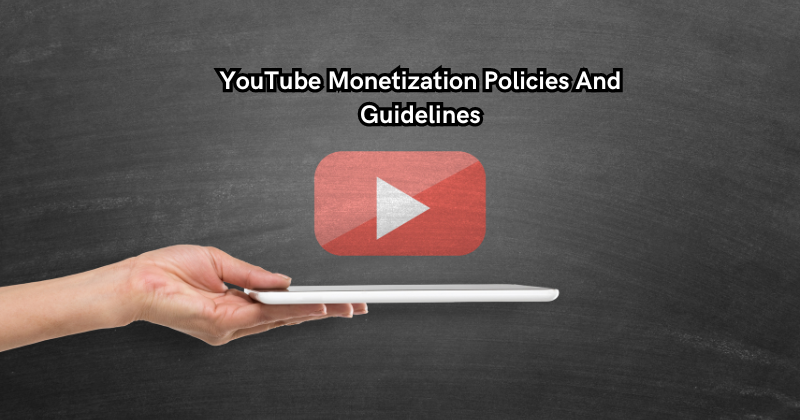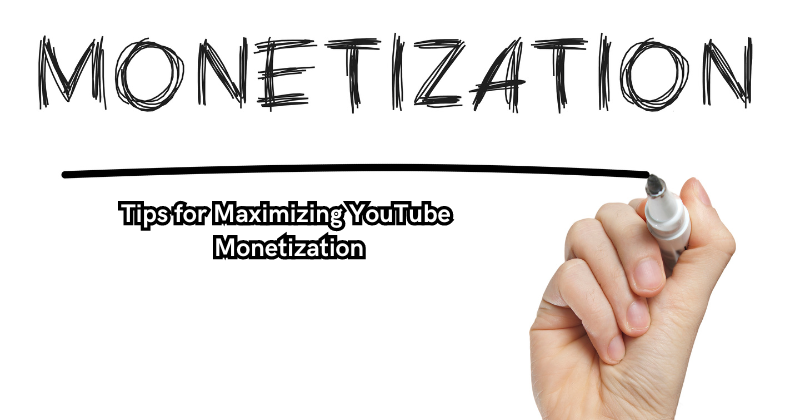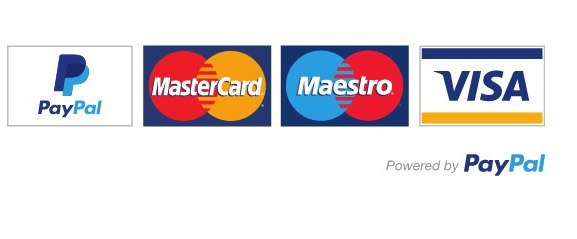YouTube has become one of the most popular platforms for content creators to share their videos with a global audience. With over 2 billion logged-in users each month, YouTube offers a vast audience for creators to showcase their talent and monetize their content. However, as with any platform, there are certain policies and guidelines that need to be followed in order to monetize on YouTube.
These policies are in place to ensure a safe and fair environment for both creators and viewers. In this document, we will discuss the YouTube monetization policies and guidelines that every creator should be aware of before starting their journey on the platform.
Why Monetization Policies are Important
As mentioned earlier, the monetization policies on YouTube are in place to ensure a safe and fair environment for everyone. These policies help maintain the reputation of the platform and its creators by setting standards for content that is suitable for advertising. Additionally, they also protect creators from potential copyright infringement issues and fraudulent activity.
Monetization policies also ensure that creators are creating original and high-quality content, which in turn benefits the viewers as well. By enforcing these policies, YouTube can maintain a level of quality for the content on their platform, making it more appealing for advertisers and ultimately benefiting creators.
Plus, by adhering to these policies, creators can build a trust with their viewers and establish themselves as reputable content creators.
Types of Monetization
There are several ways in which content creators can monetize their videos on YouTube. The two main types of monetization on the platform are through advertisements and channel memberships.
Advertisements
YouTube offers several types of advertisements that creators can choose from to monetize their videos. These include:
- Display Ads – These are the most common type of ads on YouTube, which will appear as banners or overlays on the video.
- Skippable Video Ads – As the name suggests, these ads can be skipped after 5 seconds and typically appear before, during, or after a video.
- Non-Skippable Video Ads – These ads cannot be skipped and will play for a predetermined duration before the video starts.
- Bumper Ads – These short 6-second ads appear before the video and cannot be skipped.
- Sponsored Cards – These are small pop-up cards that appear on the video and showcase relevant products or services.
Channel Memberships
In addition to advertisements, creators can also monetize their channel through memberships. This allows viewers to pay a monthly fee for exclusive access to perks and content from the creator. These perks can vary from behind-the-scenes content, early access to videos, or even personalized shoutouts.
However, it’s important for creators to note that not all channels are eligible for memberships. They must have a minimum of 30,000 subscribers and follow all YouTube monetization policies to be considered.
Guidelines for Monetizing on YouTube
In order to begin monetizing on YouTube, creators must adhere to certain guidelines set by the platform. Some of these include:
Follow Community Guidelines
Apart from monetization policies, YouTube also has a set of community guidelines that all creators must follow. These guidelines cover various aspects of content creation such as nudity and sexual content, violence, hateful and harmful content, spam and deceptive practices, and more.
Creators need to ensure that their content complies with these guidelines in order to monetize on the platform. Failure to adhere to these guidelines can result in a strike on the channel or even its termination. It is important for creators to familiarize themselves with these guidelines and regularly review them as they are subject to change.
Additionally, it is equally important for viewers to report any content that violates the community guidelines. This not only helps maintain a safe and positive environment on YouTube but also ensures that creators are creating content that is suitable for advertising.
Create Original Content
YouTube values original and creative content, which is why it is important for creators to create their own videos and avoid copying or reuploading content from other sources. This includes using someone else’s music, images, or footage without permission.
Not only does this violate copyright laws, but it also goes against YouTube’s policies and can result in demonetization or even termination of the channel. Creators should take the time to create original and unique content that will attract viewers and keep them engaged.
Plus, by creating original content, creators can also build a following and establish themselves as unique and authentic in their niche. This can ultimately lead to greater success on the platform.
Avoid Violating Copyright Laws
Copyright infringement is a serious issue on YouTube and can result in legal action against the creator. Creators must ensure that they have the necessary rights to use any copyrighted material in their videos, whether it be music, images, or footage.
YouTube has a Content ID system that automatically scans uploaded content for any copyrighted material and can result in demonetization or removal of the video. It is important for creators to do their due diligence and obtain proper licenses or permissions before using any copyrighted material in their videos.
Additionally, creators can also use royalty-free or Creative Commons content to avoid copyright infringement issues. These resources allow creators to use music, images, and footage without worrying about copyright violations.
Adhere to Advertiser-friendly Content Guidelines
Aside from following community guidelines and avoiding copyright infringement, creators must also ensure that their content is suitable for advertisers. This means that the content must be appropriate for all audiences and not contain any controversial or sensitive topics.
YouTube has a list of advertiser-friendly content guidelines that creators can refer to when creating their videos. This includes avoiding explicit language, violence, drug use, and other mature themes. Creators should also avoid using clickbait titles or thumbnails that may mislead viewers.
By following these guidelines, creators can attract more advertisers and increase their earnings through advertisements on their videos. It also helps maintain a positive and safe environment for viewers.
Maintain an Active Google AdSense Account
To receive payments from YouTube for monetized content, creators must have an active Google AdSense account. This is the platform that manages and distributes payments to creators based on their video views and engagement. Creators can set up an AdSense account through their YouTube channel by providing basic information and verifying their identity.
It is important for creators to keep their AdSense account active by regularly logging in, updating payment information, and adhering to any changes in policies or guidelines. Failure to do so can result in delays or even loss of payments from YouTube.
Plus, by maintaining an active AdSense account, creators can also access additional features and tools on YouTube that can help them grow their channel and increase earnings. This includes analytics, advanced monetization options, and promotional opportunities.
Requirement for Monetization Eligibility
As mentioned earlier, not all channels on YouTube are eligible for monetization. To be considered for the YouTube Partner Program and begin earning money from their videos, creators must meet certain requirements:
- Have a minimum of 30,000 subscribers
- Follow all YouTube monetization policies and guidelines
- Have at least 4,000 valid public watch hours in the past 12 months
- Be located in a country or region where YouTube monetization is available
- Have an active Google AdSense account linked to their channel.
Meeting these requirements does not guarantee automatic monetization for creators, as each channel is also manually reviewed by YouTube for quality and compliance with policies. Creators must continue to follow all guidelines and create original and advertiser-friendly content in order to maintain monetization eligibility.
Additionally, YouTube may change or update the requirements for monetization eligibility at any time, so it is important for creators to stay informed and adapt accordingly. By consistently creating high-quality content and following all policies, creators can increase their chances of becoming eligible for monetization.
Policies for Monetization
Once a channel becomes eligible for monetization, creators must continue to adhere to YouTube’s policies and guidelines in order to maintain their earnings. Failure to comply with these policies can result in demonetization or termination of the channel.
Some of the key policies for monetized content include:
- No excessive use of vulgar language or profanity
- No misleading or deceptive titles, thumbnails, or content
- No violence, nudity, or sexually suggestive content
- No promotion of illegal activities or substances
- No harassment or cyberbullying
If a creator’s video is found to violate any of these policies, the video can be demonetized and the creator may receive a strike on their channel. Multiple strikes can lead to termination of the channel.
How much money can be earned on YouTube
The amount of money a creator can earn on YouTube varies depending on various factors such as the number of views, engagement, and type of content. Some creators may earn thousands or even millions of dollars from their YouTube videos, while others may only make a few hundred.
YouTube uses a complex algorithm to calculate earnings for creators, but generally, the more views and engagement a video gets, the higher the earnings will be. The type of content also plays a role, as some topics or genres may have higher advertiser demand and therefore result in higher earnings for creators.
Additionally, YouTube takes a percentage of the ad revenue earned from each video before distributing it to the creator. This percentage varies depending on the type of ad and other factors.
It is also important to note that YouTube earnings may fluctuate, as they are affected by various external factors such as market trends and advertiser demand. Creators should not solely rely on YouTube for income and should have other sources of revenue to support their channel.
Monitoring and Analyzing Earnings
To track and analyze earnings on YouTube, creators can access the YouTube Analytics dashboard. This provides detailed data on views, engagement, and estimated earnings for each video.
Creators can also use third-party tools or services to gain deeper insights into their earnings and audience demographics. This information can help creators make informed decisions about their content and improve their overall monetization strategy.
Furthermore, creators can also monitor their earnings through the AdSense dashboard, which provides a breakdown of ad revenue and other income sources. This allows creators to keep track of payments and ensure that all earnings are accurately reflected.
Monitoring earnings is an important aspect of managing a successful YouTube channel and should be done regularly to identify any discrepancies or areas for improvement. By analyzing earnings data, creators can also identify which types of content are most profitable and adjust their strategies accordingly.
Can Anyone Monetize Content on YouTube?
While anyone can create a YouTube channel and upload videos, not all channels are eligible for monetization. As mentioned earlier, there are specific requirements that must be met in order to be considered for the YouTube Partner Program and start earning money from videos.
Additionally, even if a channel meets all the requirements, there is no guarantee of automatic monetization. Each channel must also go through a manual review process by YouTube to ensure it meets all policies and guidelines.
Furthermore, certain types of content may not be eligible for monetization, such as videos that include copyrighted material or violate community guidelines.
It is important for creators to thoroughly read and understand all of YouTube’s policies and guidelines before attempting to monetize their content. Violating these policies can result in demonetization and potential penalties for the creator.
Plus, maintaining a good standing with YouTube and adhering to all policies is crucial for long-term success on the platform. Building a loyal audience and attracting advertisers also relies heavily on creating high-quality, original, and advertiser-friendly content.
Mistakes to Avoid for Successful Monetization
In order to successfully monetize on YouTube, creators must avoid certain mistakes that can hinder their chances of earning money from their videos. Some common mistakes that creators should avoid include:
- Clickbait titles and thumbnails: Misleading or sensationalized titles and thumbnails may attract initial views, but they can hurt a creator’s credibility and potentially result in demonetization or penalties from YouTube.
- Inappropriate or controversial content: Content that violates community guidelines, promotes hate speech, or is generally deemed inappropriate may result in demonetization or even account termination.
- Buying views or engagement: Artificially inflating view counts and engagement not only goes against YouTube’s policies but also does not result in true and loyal viewership, which is essential for long-term success on the platform.
- Ignoring audience feedback: Creators should listen to their audience and make necessary adjustments to improve their content instead of disregarding feedback.
- Violating copyright laws: Using copyrighted material without proper permission or giving credit can result in demonetization and even legal consequences.
By avoiding these mistakes and consistently creating high-quality, original content, creators can increase their chances of monetizing successfully on YouTube. So, it is important to follow all guidelines and policies in order to achieve long-term success on the platform.
Do’s and Don’ts for YouTube Monetization
In addition to avoiding mistakes, there are certain do’s and don’ts that creators should keep in mind when it comes to YouTube monetization. Some key points to remember include:
Do:
- Create original and high-quality content
- Engage with your audience and listen to their feedback
- Regularly monitor and analyze your earnings data
- Adhere to all community guidelines and policies set by YouTube
- Diversify your sources of income, such as through sponsorships or merchandise sales
Don’t:
- Mislead viewers with clickbait titles and thumbnails
- Engage in controversial or inappropriate content
- Buy views or engagement
- Violate copyright laws
- Ignore audience feedback and suggestions
By following these do’s and don’ts, creators can position themselves for successful monetization on YouTube. It is important to remember that building a successful channel takes time, effort, and dedication.
FAQs
Conclusion
In conclusion, YouTube monetization can be a lucrative opportunity for creators, but it requires careful planning and adherence to policies and guidelines. By monitoring and analyzing earnings data, avoiding common mistakes, and following best practices, creators can increase their chances of success on the platform.
It is also important for creators to continuously engage with their audience and adapt their strategies to meet changing trends and preferences. By creating valuable and original content, maintaining a good standing with YouTube, and diversifying their sources of income, creators can create a sustainable and profitable channel on the platform.
However, it is crucial for creators to remember that success on YouTube takes time and consistent effort. Building a loyal audience and attracting advertisers requires dedication and hard work, but with the right approach, it is possible to monetize and thrive on YouTube.






